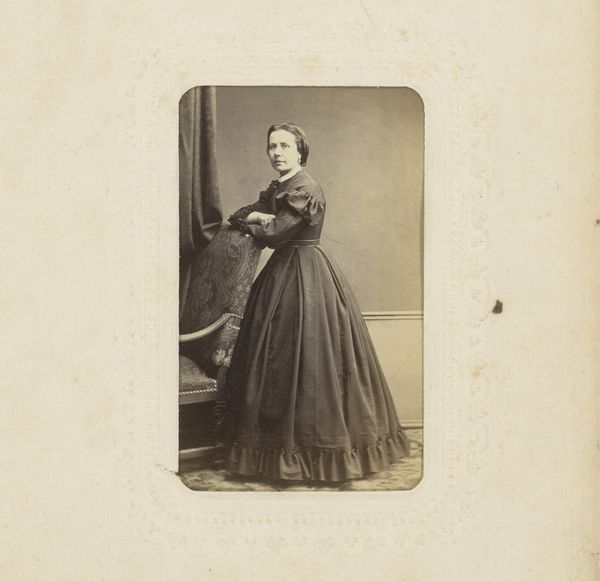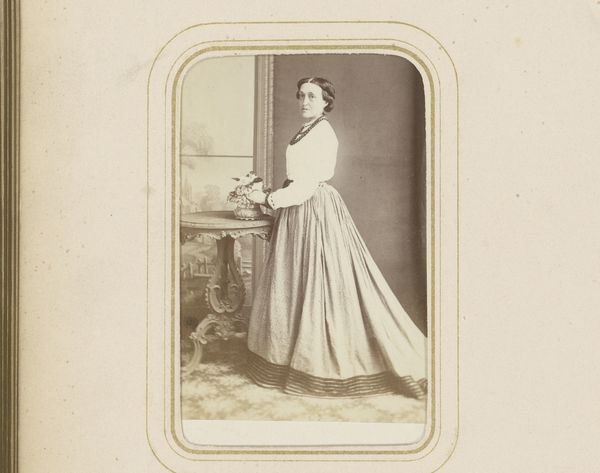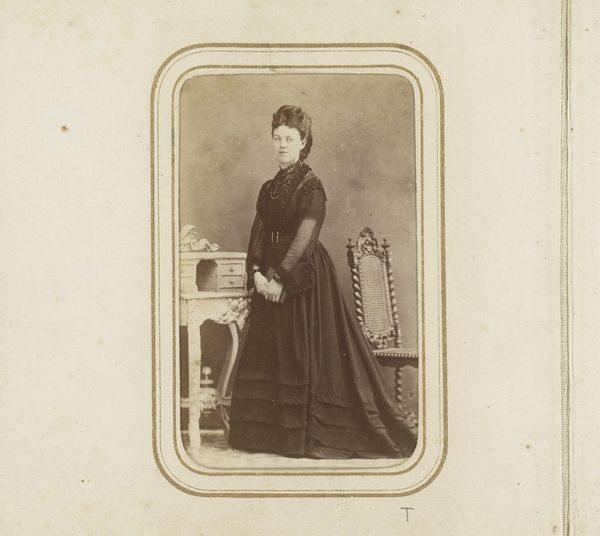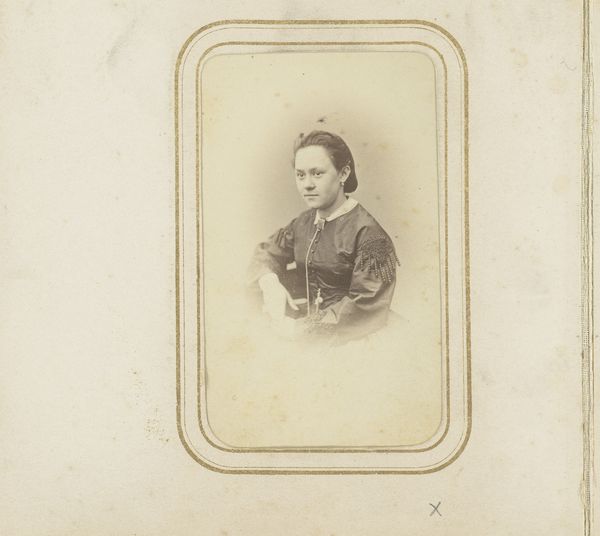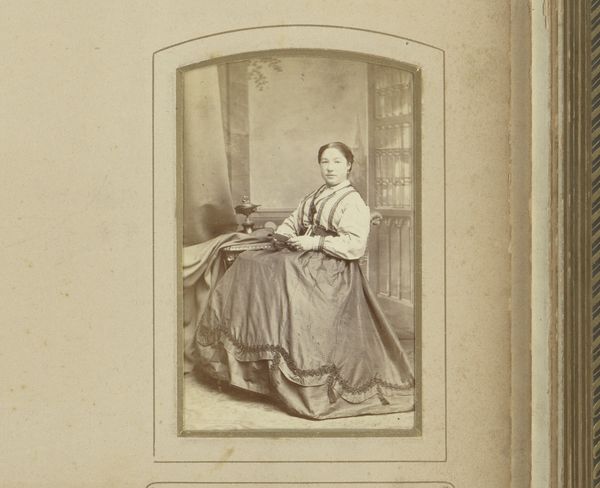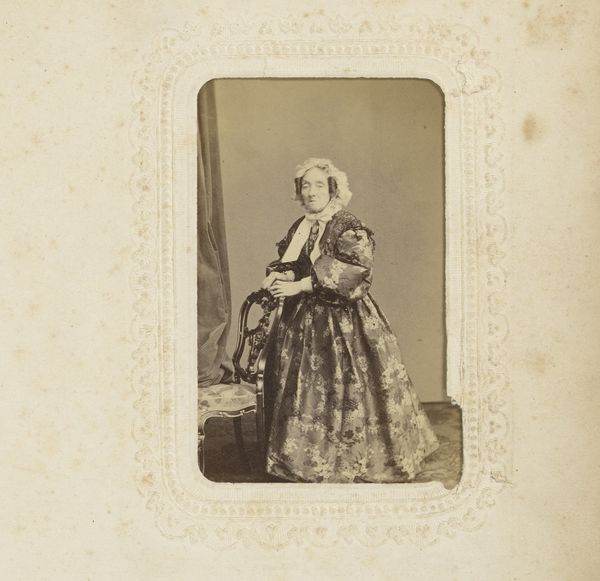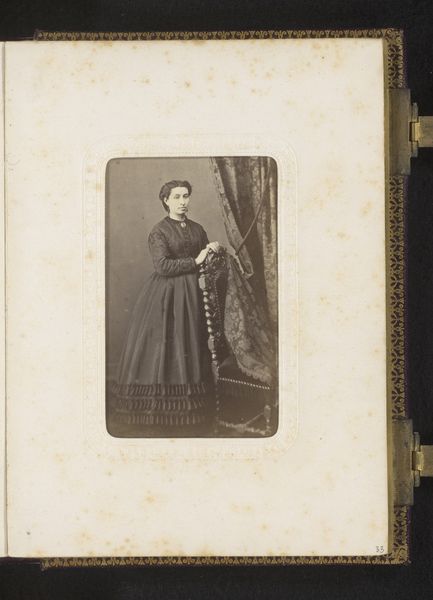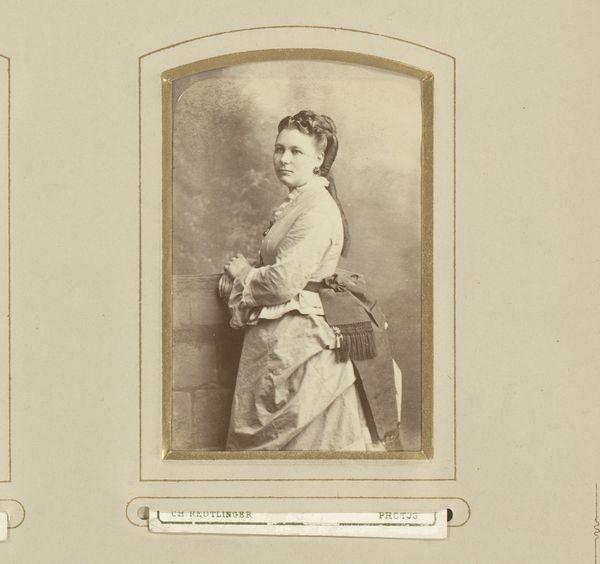
#
pencil drawn
#
aged paper
#
toned paper
#
light pencil work
#
pencil sketch
#
old engraving style
#
personal sketchbook
#
old-timey
#
pencil work
#
watercolour illustration
Dimensions: height 83 mm, width 51 mm
Copyright: Rijks Museum: Open Domain
Curator: Good morning. We’re looking at an interesting piece today called "Portret van een staande vrouw," attributed to Albert Delabarre and estimated to be created between 1866 and 1884. Editor: It has such a contained and muted atmosphere. It immediately strikes me as reserved, yet very proper, if that makes sense. The tonality lends a very subdued emotional feeling to it. Curator: Note the use of light. See how Delabarre carefully manipulates the tones in pencil, which seems to give a very soft effect across the sitter’s face. There's this interesting tension created by her formal attire contrasting with the delicacy of the medium. Editor: And that’s what makes me consider the context of its creation. A photograph translated by hand…The laborious process of creating an image in that era seems like an attempt to freeze a specific class identity, or the ideal of feminine modesty, in time. Curator: Exactly. If we apply semiotics, what do the individual details within the image mean to us now? The material culture—the sitter's clothing and jewelry—all speak to her socioeconomic position. There is such a high degree of intentional construction there. Editor: Indeed. The construction itself reflects the labour of class. How much time it took to create or capture this sort of scene would reflect not just wealth but ideas of worth in material form. Curator: It truly compels one to question traditional notions of portraiture. What’s so interesting here is not just what Delabarre has created but what we expect of the woman within it. Editor: Absolutely. It makes us aware of the act of looking, and of making itself, within a historical framework. Curator: Thank you for offering these perspectives. It adds so much depth to understanding this particular piece. Editor: A pleasure. It’s exciting to think about how the means of production shaped our current perception of images and representation.
Comments
No comments
Be the first to comment and join the conversation on the ultimate creative platform.
